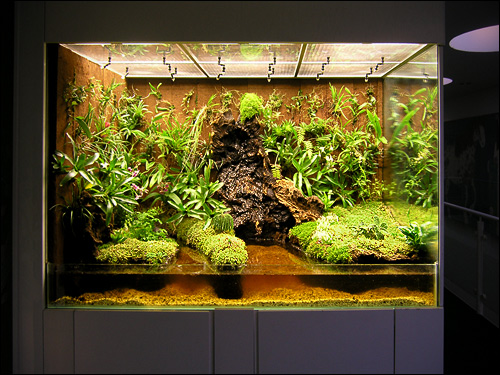The Ultimate Vivarium Bearded Dragon Setup Guide for Beginners
Introduction
Bearded dragons are undoubtedly one of the most popular reptiles kept as pets in the world today. They are relatively easy to care for and can make excellent pets for both novice and experienced reptile keepers. However, in order to keep them happy and healthy, a proper vivarium setup is crucial. In this guide, we will discuss the elements that make up a successful vivarium setup for bearded dragons.
Vivarium Size
The size of the vivarium is one of the most important considerations for your bearded dragon. You should aim for a minimum size of 4ft long, 2ft high and 2ft deep for one adult bearded dragon. This will ensure that there is enough space for the bearded dragon to move around and have different basking spots.
Lighting and Heating
Bearded dragons are diurnal, which means they are active during daylight hours. Therefore, a basking light and a UVB light is essential for your vivarium setup. The basking light should provide a warm spot for your bearded dragon to bask and regulate their temperature. The UVB light is important for bearded dragons as it provides them with the necessary vitamin D3 which they need to absorb calcium from their diet.

Substrate
The substrate is the material that lines the bottom of your vivarium. There are several options available for bearded dragon vivariums, including newspapers, reptile carpet, slate tiles, and sand. Sand is a popular substrate option, but it can cause impaction if ingested, so we recommend opting for Reptile Carpet or Slate Tiles for the substrate.

Decor and Enrichment
Decorating your vivarium with some rocks, logs, and plants can create a more natural and stimulating environment. These decorations provide hiding places, basking spots, and climbing opportunities. Ensure that the decorations you choose are safe for your bearded dragon and are not toxic or too sharp.

Feeding
Bearded dragons are omnivorous, which means they eat both plant and animal matter. In captivity, they can be fed a variety of insects, such as crickets, mealworms, wax worms, and roaches, and vegetables like kale, collard greens, and squash. Provide fresh water daily in a shallow bowl and mist the vivarium with a spray bottle to maintain the correct humidity level.

Temperature and Humidity
Bearded dragons require a temperature range of between 100-110°F at the basking spot and 85-90°F on the cool side of the vivarium. At night, the temperature can drop to 70-75°F. The humidity level in the vivarium should be around 30-40%. Use a thermometer and hygrometer to monitor the temperature and humidity levels.

Conclusion
Setting up a vivarium for your bearded dragon can seem daunting, but it doesn’t have to be. By following the above guidelines, you can create a safe, stimulating, and comfortable home for your bearded dragon. Remember to perform regular maintenance on your vivarium, such as cleaning and replacing any decorations or substrate. By doing so, you can help ensure that your bearded dragon will live a long and healthy life.
